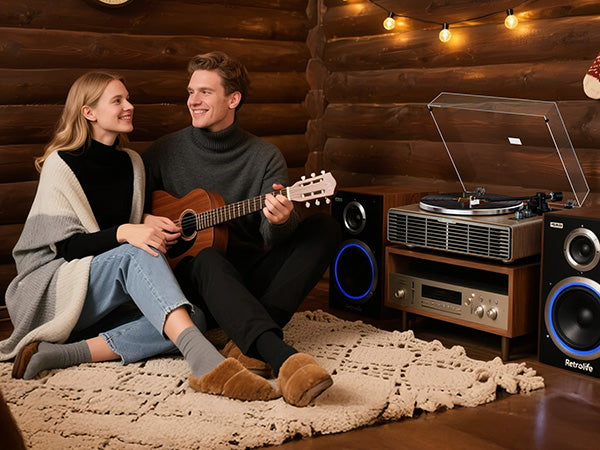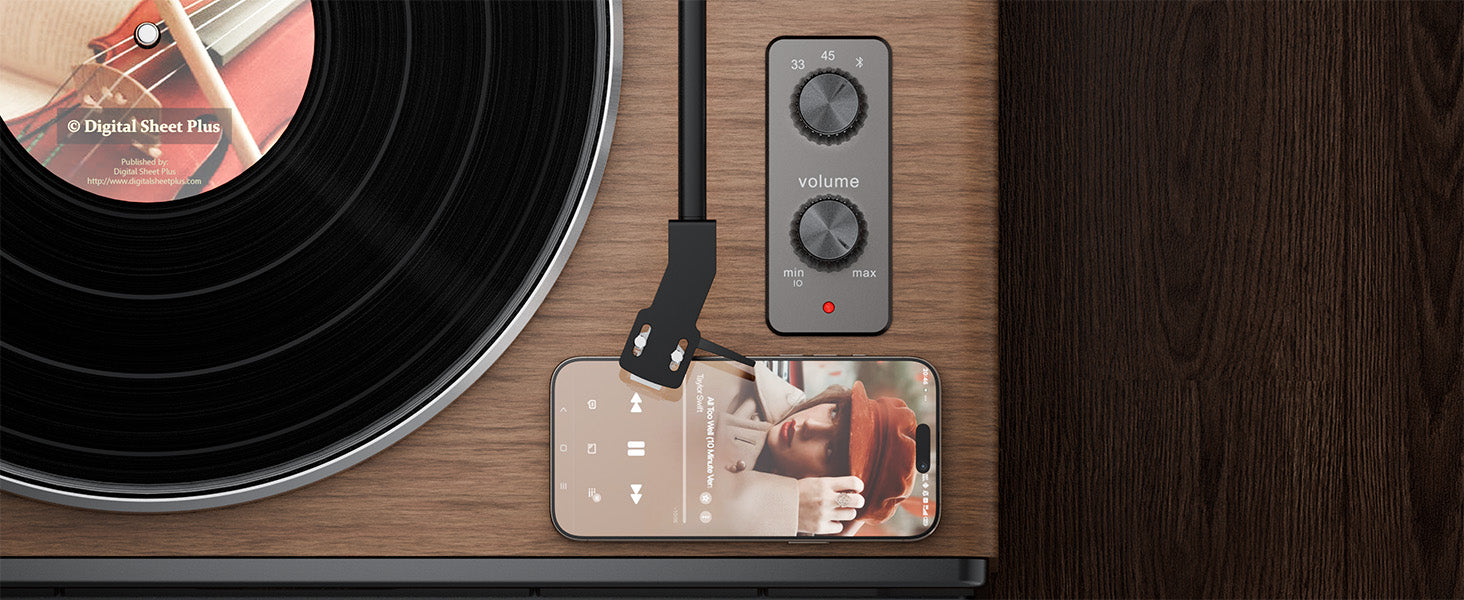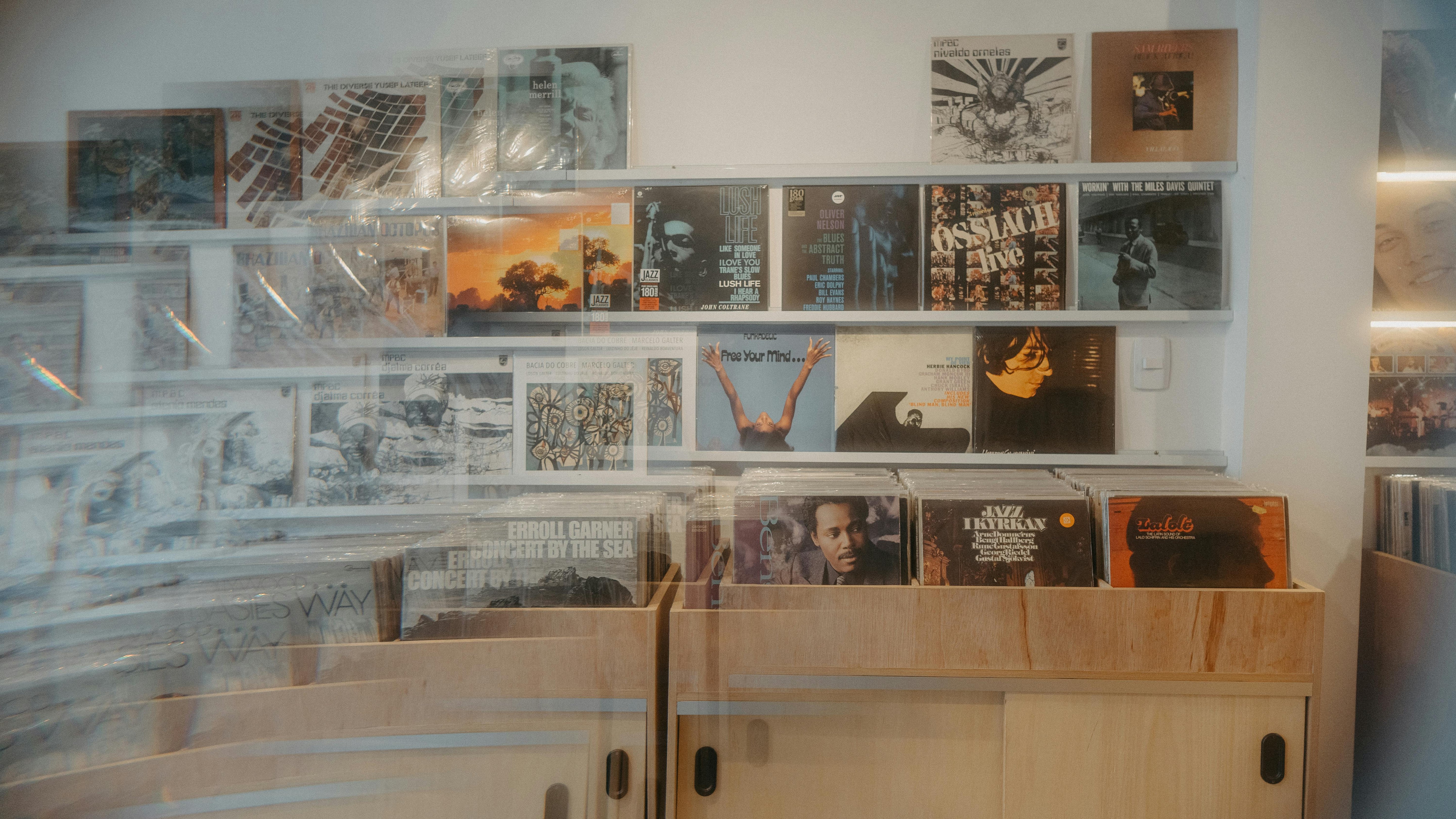You bring home a copy of Billie Eilish’s Happier Than Ever. You slide the seafoam-green vinyl from its sleeve. This isn't just an album; it’s a world. It's a landscape of ghostly whispers, intimate confessions, sudden silences, and seismic bass drops that rumble in your chest.
Now, the crucial question: What kind of machine is worthy of translating this complex sonic architecture?
Choosing a turntable isn't like picking a Bluetooth speaker. It’s like choosing a musical instrument. A poor one will butcher the song, while a great one will reveal its soul. For an artist like Billie, whose power lies in texture and atmosphere, your choice of record player is the difference between hearing the music and inhabiting it.
This guide will bypass the surface-level marketing and dive into the first principles of audio mechanics to help you select a turntable that can truly do justice to your favorite singer's art.
The First Principle: Your Turntable Is a Mechanical Translator
Before we discuss any features, you must internalize this truth: a record player is a precision mechanical device, not an electronic gadget. Its primary job is to perform a miracle of physics: trace a microscopic, vibrating groove—a physical carving of a soundwave—and convert that motion back into electricity with a high degree of accuracy and a minimum of interference.
Everything else is secondary. An artist like Billie Eilish pushes the boundaries of this mechanical process. Her music is a stress test for any turntable, specifically in three areas:
-
The Whisper-to-Roar Dynamic: The extreme shifts from near-silence to a powerful sub-bass drop.
-
Sub-Bass Frequencies: The deep, foundational bass that defines tracks like "bad guy."
-
Vocal Intimacy & Texture: The close-mic'd, ASMR-like quality of her vocals.
A cheap, poorly designed turntable will fail this test spectacularly. Here’s what to look for to ensure yours passes.
The Non-Negotiable Checklist for Atmospheric Sound
Forget the flashy features for a moment. If a turntable doesn't meet these three mechanical criteria, it is fundamentally a toy, not a tool for serious listening.
1. The Tonearm: The Navigator of the Groove
The tonearm holds the cartridge and stylus as it navigates the record. A good one is a master navigator; a bad one is a clumsy trespasser that damages the groove.
-
What You Need: A tonearm with an adjustable counterweight and anti-skate control. This is non-negotiable.
-
Why It Matters (First Principle): The counterweight allows you to set the precise downward pressure (Vertical Tracking Force) for your stylus. Too heavy, and you'll grind down your records and destroy sonic detail. Too light, and the stylus will mis-track or jump out of the groove during a loud bass drop—a common occurrence in Billie's music. The anti-skate provides a small outward force to counteract the tonearm's natural tendency to pull inward, ensuring the stylus sits perfectly centered in the groove. This is critical for accurate stereo imaging, which creates that sense of "atmosphere" and space.
2. The Platter & Drive System: The Foundation of Stability
The platter is what your record sits on. Its stability is the foundation of the sound.
-
What You Need: A heavy, solid platter and preferably a belt-drive system.
-
Why It Matters (First Principle): Billie's music relies on deep, sustained bass notes. To reproduce these accurately, the platter must spin at an absolutely constant speed. Any variation, known as ["wow and flutter,"](https://www.soundguys.com/wow-and-flutter-explained-2 wow-and-flutter-explained-20599/) will turn a clean bass note into a queasy, wavering sound. A heavier platter has more inertia, acting like a flywheel to resist speed fluctuations. A belt-drive system isolates the platter from the motor's vibrations, preventing motor "rumble" from muddying the quiet, intimate vocal passages.
3. The Plinth & Feet: The Shield Against Vibration
The plinth is the base of the turntable. Its job is to be an immovable, vibration-absorbing object.
-
What You Need: A dense, solid plinth (MDF is common and effective) and damping feet.
-
Why It Matters (First-Principle): Sub-bass is a physical force. In a room, the low frequencies from your speakers will travel through the floor and furniture and try to vibrate your turntable. If the turntable isn't properly isolated, the stylus will pick up these vibrations, creating a feedback loop that results in a loud, uncontrolled "howl" or "rumble." This is the number one enemy of bass-heavy vinyl playback. A solid plinth and specialized feet absorb these vibrations before they can interfere with the delicate process of reading the groove.
Beyond the Basics: Where Do Features Fit In?
Once a turntable has satisfied these core mechanical requirements, then you can consider modern conveniences. A model like the XJ-HOME Recoder is a prime example of the correct philosophy: fundamentals first, features second. It is built around a solid plinth and platter with a properly adjustable tonearm, ensuring it passes the "Billie Eilish test." Then, it thoughtfully adds features like USB and Bluetooth.
This approach ensures you are not sacrificing core audio quality for convenience. You get a machine that can excavate the texture from the grooves and give you the option to digitize your rare pressings or stream casually to a wireless speaker.
Conclusion: Honor the Artistry
Choosing a turntable for your favorite singer is an act of respect for their artistry. For an artist like Billie Eilish, who builds entire worlds out of sound, a cheap record player is like trying to view a masterpiece of cinematography on a cracked, low-resolution phone screen. You'll get the plot, but you'll miss all the art.
By prioritizing the mechanical integrity of the turntable—the tonearm, the platter, the isolation—you acquire an instrument capable of unlocking the full emotional and atmospheric depth layered into the grooves. You invest in a machine that doesn't just play the music, but faithfully resurrects the very air and space of the studio where it was born.
Understanding Check: Questions & Answers
1. Question: Why is a turntable's vibration isolation (its plinth and feet) particularly critical for enjoying Billie Eilish's music, more so than for, say, a simple acoustic folk album?
Answer: The reason is the prevalence of powerful, low-frequency sub-bass in her music. Sub-bass produces long, strong sound waves that physically vibrate the room, floor, and furniture. If a turntable is not properly isolated, these vibrations will travel up into the plinth and tonearm, causing the stylus to vibrate. The turntable cannot distinguish this external vibration from the intended vibration in the record groove. It amplifies it, creating a destructive feedback loop of low-frequency rumble or howling that can overwhelm the music. An acoustic folk album lacks this intense sub-bass energy, making external vibration a far less critical issue. For Billie's music, it's a fundamental challenge that must be addressed by the turntable's design.
2. Question: Describe what would likely happen during the transition in a song like "Happier Than Ever," which moves from a quiet, ukulele-backed vocal to a loud, distorted rock finish, when played on a cheap, non-adjustable "suitcase" player versus a properly calibrated turntable.
Answer: On a cheap "suitcase" player, the experience would be poor at both ends. During the quiet ukulele intro, the high motor rumble and lack of isolation would create audible noise, disrupting the intimacy. As the song transitions to its loud rock finish, the tonearm, which is likely tracking too heavily and has no anti-skate, would struggle to navigate the heavily modulated grooves. This would result in significant distortion, a muddying of the sound, and a high probability of the stylus skipping or "jumping the groove." On a properly calibrated turntable, the quiet intro would be clear against a silent background. When the loud section hits, the correctly set tracking force and anti-skate would keep the stylus perfectly seated in the groove, cleanly translating the powerful dynamics without distortion or skipping, delivering the full emotional impact intended by the artist.
3. Question: A friend says they want "the best turntable for under $200." Based on the first principles in the article, what is a better question for them to be asking to ensure they get a quality component?
Answer: A better, more insightful question would be: "What is the most affordable turntable that has a fully adjustable tonearm with a counterweight and a standard, replaceable cartridge?" This question reframes the problem away from an arbitrary price point and towards the non-negotiable mechanical feature that separates a true audio component from a record-damaging toy. By focusing on this core requirement, they are prioritizing the long-term health of their vinyl collection and the fundamental sound quality, ensuring they get the best possible instrument for their money, regardless of secondary features.





Leave a comment
All comments are moderated before being published.
This site is protected by hCaptcha and the hCaptcha Privacy Policy and Terms of Service apply.